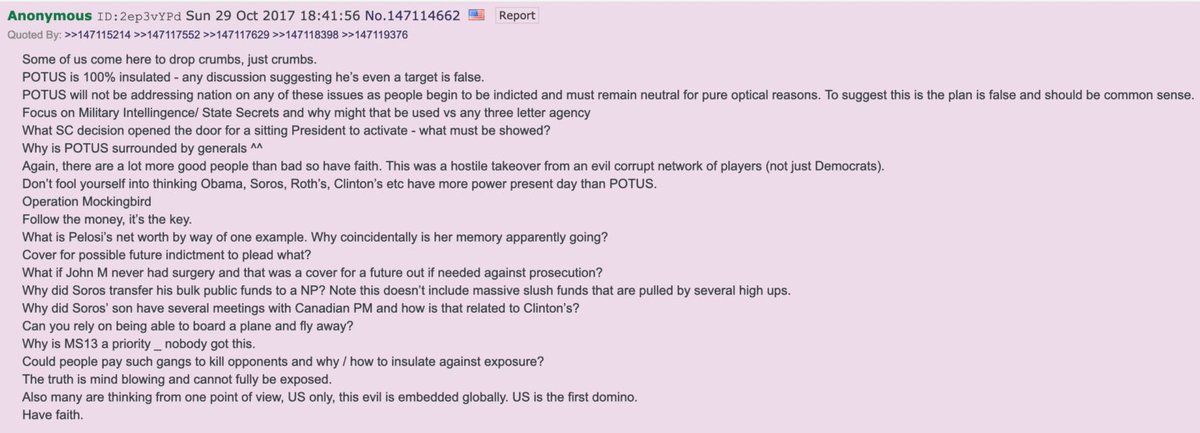
A (re)discovered series of posts seemingly authored by Q shed a little more light on the figure behind the notorious conspiracy. Largely unnoticed, they have not entered "official" aggregators of "Q drops" - as true believers call Q's prophecies.
bellingcat.com/news/rest-of-w…
bellingcat.com/news/rest-of-w…
How do we know they share the same author as Q's "canonical" posts? These "lost drops" include large sections of text which are identical to both previous and subsequent Q drops, in several cases sharing a unique user ID with the latter.
Compare Lost drop A (left) with canonical drop 4 (right). These apocryphal "Q drops" were made shortly after the first verified Q drop, on October 28, 2017. The conspiracy was in its infancy - what would an impostor have to gain? 



In Q’s earliest days, the author hadn’t quite figured out what tone or personality was right for this character. Eventually the author settled on a winning plan: “Q” should operate at a lofty remove from each thread, dispensing pearls of wisdom for their fans to decipher.
But in these posts, the author is out of character and directly attacks critics. This author is "one of the guys" - vulgar and brittle, much like the online culture they thrived in. This shows how Q was a regular "anon". bellingcat.com/news/americas/…
As this dangerous conspiracy has gained prominence, observers have sought a smoking gun to identify the culprit once and for all. These "lost drops" are not that smoking gun - but they may undermine the mystique which has enticed and radicalised QAnon's true believers.
Read this investigation from @QOrigins here: bellingcat.com/news/rest-of-w…
• • •
Missing some Tweet in this thread? You can try to
force a refresh







